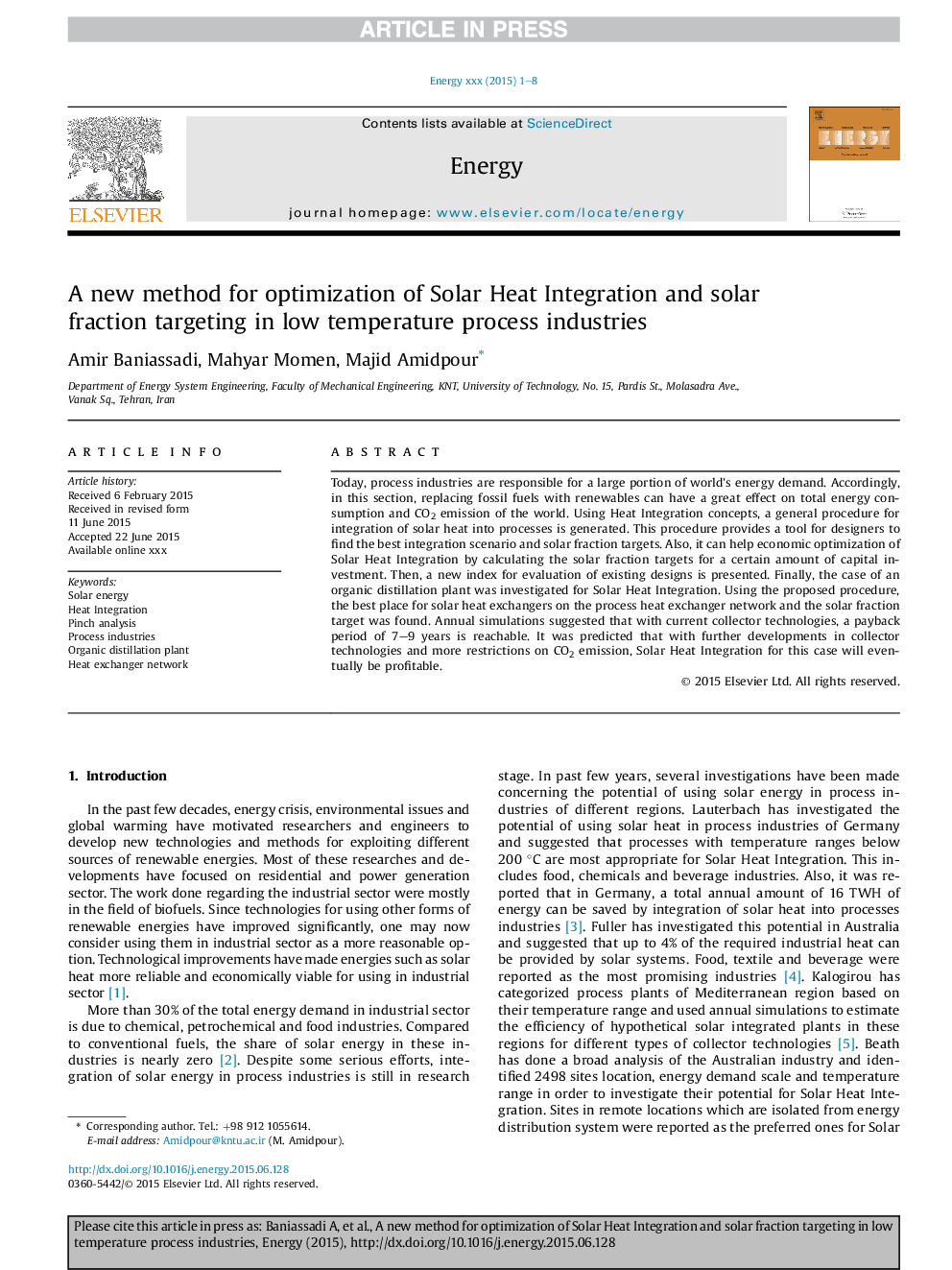| Article ID | Journal | Published Year | Pages | File Type |
|---|---|---|---|---|
| 8074569 | Energy | 2015 | 8 Pages |
Abstract
Today, process industries are responsible for a large portion of world's energy demand. Accordingly, in this section, replacing fossil fuels with renewables can have a great effect on total energy consumption and CO2 emission of the world. Using Heat Integration concepts, a general procedure for integration of solar heat into processes is generated. This procedure provides a tool for designers to find the best integration scenario and solar fraction targets. Also, it can help economic optimization of Solar Heat Integration by calculating the solar fraction targets for a certain amount of capital investment. Then, a new index for evaluation of existing designs is presented. Finally, the case of an organic distillation plant was investigated for Solar Heat Integration. Using the proposed procedure, the best place for solar heat exchangers on the process heat exchanger network and the solar fraction target was found. Annual simulations suggested that with current collector technologies, a payback period of 7-9 years is reachable. It was predicted that with further developments in collector technologies and more restrictions on CO2 emission, Solar Heat Integration for this case will eventually be profitable.
Related Topics
Physical Sciences and Engineering
Energy
Energy (General)
Authors
Amir Baniassadi, Mahyar Momen, Majid Amidpour,
